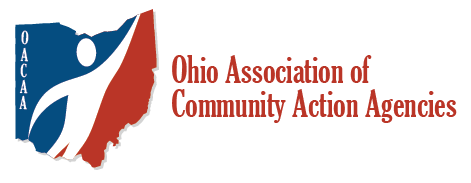The 130th General Assembly is now on summer break after finishing the biennial budget, presenting us with a good opportunity to review the bills OACAA has followed and those we will continue to follow when the General Assembly returns:
HB 3 INSURANCE NAVIGATORS (Sears, B.)
Among other provisions, HB 3, which becomes effective on July 30, provides for the certification of insurance navigators for the purpose of assisting individuals in purchasing health insurance through a health insurance exchange established under the federal Patient Protection and Affordable Care Act of 2010. HB 3 also mandates the Ohio Department of Insurance (ODI) adopt rules to establish a certification and training program for prospective insurance navigators and the insurance navigator’s employees. This will include a criminal records check, initial and continuing education requirements, and an examination.
On July 18th, ODI held a public hearing regarding the draft rules. Phil Cole, OACAA Executive Director, submitted written testimony stating that the rules, as drafted, are written too narrowly, excluding many organizations, including CAAs, from participating as navigators. Mr. Cole also stated that Ohio’s Community Action Agencies see many of the 1.5 million uninsured at our health care facilities. OACAA will continue to discuss this issue with ODI senior staff and will be meeting with them in the near future to hopefully resolve our concern.
HB 59 BUDGET BILL (Amstutz, R.)
Governor Kasich signed HB 59 on June 30, 2013. Appropriation provisions went into effect on July 1, 2013 while non-appropriation provisions go into effect on September 29, 2013.
Some issues of interest to OACAA members include:
Family Planning Funds
This provision requires that the Department of Health (ODH) and the Ohio Department of Job and Family Services (ODJFS), when distributing funds for family planning services, award them first to public entities that (1) have applied for funding, (2) are operated by state or local government entities, and (3) provide or are able to provide family planning services. If any funds remain after distributing funds to those public entities, the bill permits ODH and ODJFS to distribute funds to nonpublic entities in the following order of descending priority:
(1) Nonpublic entities that are federally qualified health centers (FQHCs), FQHC lookalikes, or Community Action Agencies;
2) Nonpublic entities that provide comprehensive primary and preventive care services in addition to family planning services;
3) Nonpublic entities that provide family planning services, but do not provide comprehensive primary and preventive care services.
OACAA worked for several months to move our agencies to the top of the priority list, including oral and written testimony by Executive Director Phil Cole and discussions with legislators.
HEAP Weatherization
HB 59 allows up to 25 percent of federal funds deposited into the Home Energy Assistance Block Grant Fund to be used for home weatherization services as determined by the director of Development Services. Until the passage of the budget, Ohio law allowed up to 15 percent of block grant funds to be used for home weatherization assistance.
Medicaid Expansion
Governor Kasich’s budget proposal included expanding Medicaid coverage so 275,000 additional Ohioans would have access to affordable care, but majority Republicans are divided on the issue and the House stripped the language from the bill.
Currently, legislators in both the Senate and the House are working to identify significant Medicaid reforms that would make the program more efficient and cost-effective. This work will continue over the summer, and legislation both reforming the program and expanding eligibility could be ready for consideration when the legislature returns in September. OACAA supports Governor Kasich’s Medicaid expansion proposal and we will work with the administration and members of the legislature to ensure its passage in the fall.
SB 19 FAMILY STABILITY COMMISSION (Tavares, C., Manning, G.)
SB 19 passed the Senate on April 30, 2013 by a vote of 32-1. The bill is now being heard in the House Health & Aging Committee where it has received one hearing to date. The proposed Ohio Family Stability Commission would be charged with studying, reporting and making recommendations to the General Assembly and other appropriate state agencies during the four-year life of the commission. The commission would be comprised of professionals with expertise in basically every discipline that studies or contributes to the stability or instability of a family, and charged to come up with ideas and recommendations to best serve the state. During sponsor testimony, Senator Manning stated that SB 19 would, “Give us, as a legislature, the potential to have enormous resources in tackling these issues that threaten our most important building block – the family.”
HB 1 WORKFORCE DEVELOPMENT (Derickson, T.)
HB 1 was signed by Governor Kasich on June 27, 2013 and will go into effect on September 26, 2013. The law requires all local areas, whether designated as a local area under the federal Workforce Investment Act of 1998 or state law, to use OhioMeansJobs as the labor exchange and job placement system for the area while prohibiting any additional workforce funds from being used to build or maintain any labor exchange and job placement system that is duplicative to OhioMeansJobs. The new law will also require, within six months after the bill’s effective date, that every local area, whether designated as a local area under WIA or state law, to name its one-stop system as “OhioMeansJobs (name of county) County.”
